TEMPPELIN KUVAKIELTÄ ETERIN KIRJASSA
Ja tapahtui, että Jeredin veli - - meni vuorelle, jota he nimittivät Seleminvuoreksi sen tavattoman korkeuden tähden ...
Eter 3:1
Alkuperäinen englanninkielinen artikkeli:
KnoWhy nro 237, 23.11.2016.* * *
Mormonin kirjan lukijat tuntevat hyvin kertomuksen, jossa Jeredin veli näkee kuolevaisuutta edeltävän Jeesuksen Kristuksen sormen ja sen jälkeen hänen henkiruumiinsa. Joskus kuitenkin saattaa jäädä huomaamatta, että temppelin kuvakieltä käytetään laajasti tässä näkykertomuksessa Eterin kirjan luvussa 3. Moroni kuvaili tapahtumaa kielellä, joka muistuttaa muiden profeettojen, kuten Mooseksen ja Jesajan sekä myös muinaisessa israelilaisten temppelissä palvelleiden ylipappien kokemuksista. Tällainen kielenkäyttö osoittaa, että Moroni piti todennäköisesti Jaredin veljen kokemusta rinnakkaisena temppelipalveluksen kanssa, jota tultaisiin suorittamaan israelilaisten ja nefiläisten keskuudessa.| Eter 3 | Muinainen temppeli | Kuva |
|---|---|---|
| Seleminvuoren "tavaton korkeus" (jae 1) |
| 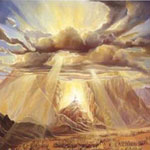 |
| "kuusitoista pientä kiveä" (jae 1) |
| 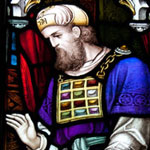 |
| "hän vei [kivet] käsissään vuoren huipulle" (jae 1) |
| 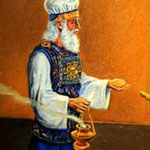 |
| "joudumme vedenpaljouksien keskelle" (jae 2) | 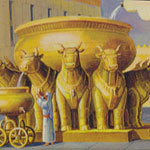 | |
| Huoli langenneesta tilasta (jae 2) |
| 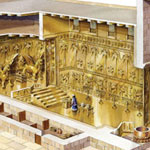 |
| Näki Herran sormen (jae 6) |
| 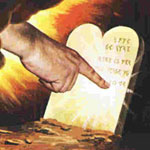 |
| Lankesi maahan Herran eteen (jae 6) |
| 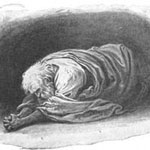 |
| Lankesi maahan ja pelästyi - pelkäsi että häntä lyötäisiin (jakeet 6 ja 8) |
| 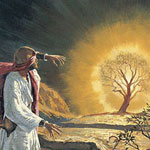 |
| Näki Herran (jae 13) Saw the Lord (v. 13) |
| 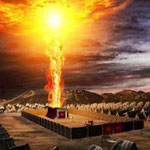 |
| “ei voitu estää näkemästä väliverhon tuolle puolen” (jakeet 19-20) |
| 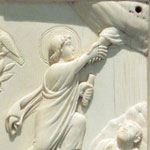 |
| Näytettiin Jumalan luomistyö (jakeet 15,18,25-26) |
|  |
| Annettiin "kaksi kiveä", jotka "kirkastaisivat ihmisten silmille" asiat, jotka hän kirjoittaa (jakeet 23-24,28) |
| 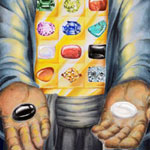 |
Tämäntyyppisten tekstien ja temppeliendaumentin välisestä suhteesta vanhin Neal A. Maxwell kahdentoista apostolin koorumista on sanonut:
Samoin BYU:n entinen uskonnonopetuksen professori M. Catherine Thomas on oivaltavasti esittänyt, että ”Jeredin veli sai endaumentin Selem-vuoren huipulla”.(13) On mahdollista, [ensinnäkin] että Moroni ymmärsi näin olleen, ollessaan tietoinen samanlaisista vuorenhuippu- tai temppelikokemuksista - esimerkkinä profeetat kuten Nefi (1. Nefi 11) ja kansa Runsaudenmaan temppelin luona (3. Nefi 11) - sekä [toiseksi] että hän tarkoituksella korosti käsitteitä, jotka saisivat lukijat tunnistamaan rinnakkaisuudet Jeredin veljen kokemuksen ja temppelin rituaalien ja toimitusten välillä.Profeetta Joseph Smithin mukaan pyhä endaumentti annettiin olennaisilta osiltaan Moosekselle "vuoren huipulla". Presidentti Joseph Fielding Smith ilmaisi uskovansa, että Pietari, Jaakob ja Johannes saivat myös pyhän endaumentin vuorella - Kirkastusvuorella. Myös Nefi temmattiin korkealle vuorelle (ks. 1. Nefi 11: 1), ja häntä kehotettiin olemaan kirjoittamatta tai puhumatta joistakin siellä kokemistaan asioista (ks. 1. Nefi 14:25). (12)
Lisälukemista

M. Catherine Thomas: “The Brother of Jared at the Veil,” teoksessa Temples in the Ancient World: Ritual and Symbolism, toim. Donald W. Parry (Salt Lake City ja Provo, UT: Deseret Book ja FARMS, 1994), 388–398.

Kent P. Jackson: “’Never Have I Showed Myself unto Man’: A Suggestion for Understanding Ether 3:15a,” BYU Studies 30, nro. 3 (1990): 71–76.

M. Catherine Thomas: “The Brother of Jared at the Veil,” teoksessa Temples in the Ancient World: Ritual and Symbolism, toim. Donald W. Parry (Salt Lake City ja Provo, UT: Deseret Book ja FARMS, 1994), 388–398.

Kent P. Jackson: “’Never Have I Showed Myself unto Man’: A Suggestion for Understanding Ether 3:15a,” BYU Studies 30, nro. 3 (1990): 71–76.
 |
| Näitkö sinä enemmän kuin tämän? Marcus Alan Vincent (Lähde: ChurchofJesusChrist.org) |
Viitteet
2. Ks. M. Catherine Thomas, “The Brother of Jared at the Veil,” teoksessa Temples of the Ancient World: Ritual and Symbolism, toim. Donald W. Parry (Salt Lake City and Provo, UT: Deseret Book and FARMS, 1994), 388–398.
3. *Ylipapin olkapäillä oli kaksi kiveä, rintalevyssä kaksitoista kiveä ja kaksi efodin ”taskussa” (urim ja tummim) = 16 kiveä. On myös mielenkiintoista huomioida, että muinainen perimätieto, joka koskee urimia ja tummimia, kuvaa ne "loistaviksi" tai valoa säteileviksi. Josefus antoi ymmärtää, että papillisen vaatetuksen kivet toimivat niistä lähtevien kirkkaiden säteiden kautta (Ant. 3:8 § 9). Ks. myös Book of Mormon Central, “KW 240: Why Did the Brother of Jared Believe Stones Could Shine? (Ether 6:3),” KnoWhy 240 (28.11. 2016).
4. Lynn and Hope Hilton, “The Hand as a Cup in Ancient Temple Worship,” teoksessa Discovering Lehi: New Evidence of Lehi and Nephi in Arabia (Springville, UT: Cedar Fort, 1996), 171–177.
5. Ks. esim. Edward Curtis and Albert Madsen, A Critical and Exegetical Commentary on the Books of Chronicles (Edinburgh: T&T Clark, 2001), 331–332.
6. John W. Welch, “The Temple in the Book of Mormon: The Temples at the Cities of Nephi, Zarahemla, and Bountiful,” teoksessa Temples of the Ancient World, 366; Donald W. Parry, “Garden of Eden: Prototype Sanctuary,” teoksessa Temples of the Ancient World, 126–151.
7. See Alex Douglas, “The Garden of Eden, the Ancient Temple, and Receiving a New Name,” teoksessa Ascending the Mountain of the Lord: Temple, Praise, and Worship in the Old Testament (2013 Sperry Symposium), toim. Jeffrey R. Chadwick, Matthew J. Grey, ja David Rolph Seely (Provo, UT: Religious Studies Center, Brigham Young University; Salt Lake City: Deseret Book, 2013), 39–41.
8. Vrt. Tuom. 13:20; 1Sam. 5:3–4; Matteus 2:11; Markus 5:22; Luukas 5:12; 8:41; 17:16; Ilm. 5:8, 13–14; 7:11; 11:15–17; 19:2, 4. Lisälukemista ks. Matthew L. Bowen, “‘They Came Forth and Fell Down and Partook of the Fruit of the Tree’: Proskynesis in 3 Nephi 11:12–19 and 17:9–10 and Its Significance,” teoksessa Third Nephi: An Incomparable Scripture, toim. Andrew C. Skinner ja Gaye Strathearn (Provo, UT: Neal A. Maxwell Institute and Deseret Book, 2012), 107–29; Matthew L. Bowen, “They Came and Held Him by the Feet and Worshipped Him”: Proskynesis before Jesus in Its Biblical and Ancient Near Eastern Context,” Studies in the Bible and Antiquity 5 (2013): 63–89; Book of Mormon Central, “Why Did the People Fall Down at the Feet of Jesus? (3 Nephi 11:17),” KnoWhy 202 (October 5, 2016).
9. Ks. myös Matteus 27:51; Markus 15:38; Luukas 23:45; 1 Kor. 13:12; Alma 19:6; Eter 12:19; OL 38:8; 67:10; 101:23; 110:1; KHMooses 7:61.
10. Ks. Matthew B. Brown, The Gate of Heaven (American Fork, UT: Covenant Communications, 1999), 138–139; John Eaton, Festal Drama in Deutero-Isaiah (London: SPCK, 1979), 17–18, 42–43; Stephen D. Ricks, “Liturgy and Cosmogony: The Ritual Use of Creation Accounts in the Ancient Near East,” teoksessa Temples of the Ancient World, 118–125.
11. 3Moos. 8:8; 4Moos. 27:21; 5Moos. 33:8; 1Samuel 2:18; 14:41; 23:6, 9–13; 28:6; 30:7–8; Esra 2:63; Nehemia 7:65; Hoosea 3:4; Siirak 45:10; Moosia 8:13–18; Alma 37:1–3; KHAbraham 3:1, 4.
12. Neal A. Maxwell, Lord Increase Our Faith (Salt Lake City, UT: Bookcraft, 1994), 78.
13. Thomas, “The Brother of Jared at the Veil,” 397.
5. Ks. esim. Edward Curtis and Albert Madsen, A Critical and Exegetical Commentary on the Books of Chronicles (Edinburgh: T&T Clark, 2001), 331–332.
6. John W. Welch, “The Temple in the Book of Mormon: The Temples at the Cities of Nephi, Zarahemla, and Bountiful,” teoksessa Temples of the Ancient World, 366; Donald W. Parry, “Garden of Eden: Prototype Sanctuary,” teoksessa Temples of the Ancient World, 126–151.
7. See Alex Douglas, “The Garden of Eden, the Ancient Temple, and Receiving a New Name,” teoksessa Ascending the Mountain of the Lord: Temple, Praise, and Worship in the Old Testament (2013 Sperry Symposium), toim. Jeffrey R. Chadwick, Matthew J. Grey, ja David Rolph Seely (Provo, UT: Religious Studies Center, Brigham Young University; Salt Lake City: Deseret Book, 2013), 39–41.
8. Vrt. Tuom. 13:20; 1Sam. 5:3–4; Matteus 2:11; Markus 5:22; Luukas 5:12; 8:41; 17:16; Ilm. 5:8, 13–14; 7:11; 11:15–17; 19:2, 4. Lisälukemista ks. Matthew L. Bowen, “‘They Came Forth and Fell Down and Partook of the Fruit of the Tree’: Proskynesis in 3 Nephi 11:12–19 and 17:9–10 and Its Significance,” teoksessa Third Nephi: An Incomparable Scripture, toim. Andrew C. Skinner ja Gaye Strathearn (Provo, UT: Neal A. Maxwell Institute and Deseret Book, 2012), 107–29; Matthew L. Bowen, “They Came and Held Him by the Feet and Worshipped Him”: Proskynesis before Jesus in Its Biblical and Ancient Near Eastern Context,” Studies in the Bible and Antiquity 5 (2013): 63–89; Book of Mormon Central, “Why Did the People Fall Down at the Feet of Jesus? (3 Nephi 11:17),” KnoWhy 202 (October 5, 2016).
9. Ks. myös Matteus 27:51; Markus 15:38; Luukas 23:45; 1 Kor. 13:12; Alma 19:6; Eter 12:19; OL 38:8; 67:10; 101:23; 110:1; KHMooses 7:61.
10. Ks. Matthew B. Brown, The Gate of Heaven (American Fork, UT: Covenant Communications, 1999), 138–139; John Eaton, Festal Drama in Deutero-Isaiah (London: SPCK, 1979), 17–18, 42–43; Stephen D. Ricks, “Liturgy and Cosmogony: The Ritual Use of Creation Accounts in the Ancient Near East,” teoksessa Temples of the Ancient World, 118–125.
11. 3Moos. 8:8; 4Moos. 27:21; 5Moos. 33:8; 1Samuel 2:18; 14:41; 23:6, 9–13; 28:6; 30:7–8; Esra 2:63; Nehemia 7:65; Hoosea 3:4; Siirak 45:10; Moosia 8:13–18; Alma 37:1–3; KHAbraham 3:1, 4.
12. Neal A. Maxwell, Lord Increase Our Faith (Salt Lake City, UT: Bookcraft, 1994), 78.
13. Thomas, “The Brother of Jared at the Veil,” 397.
________________________

